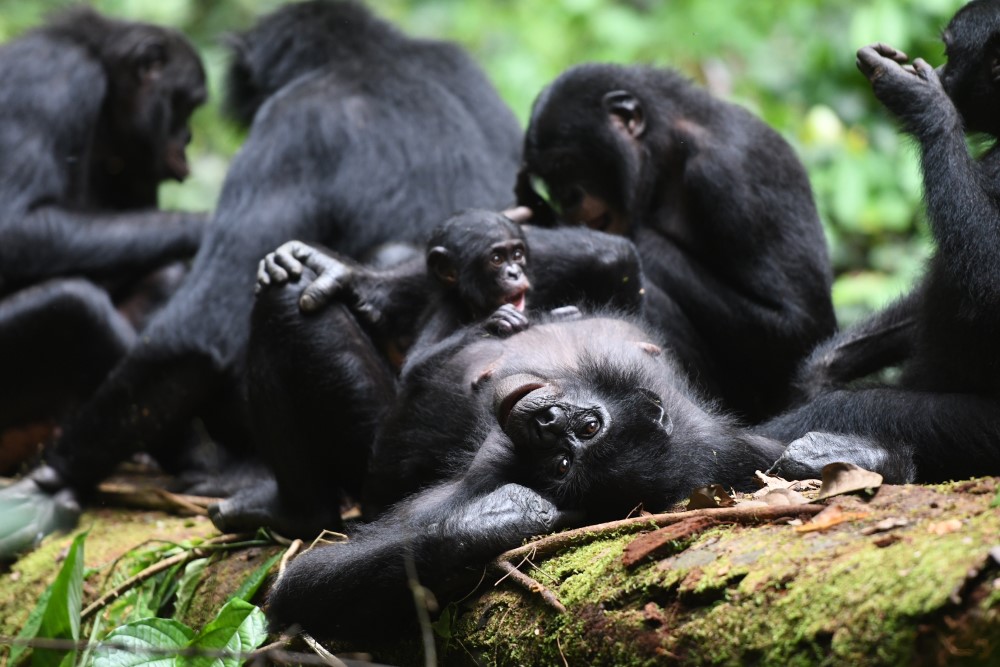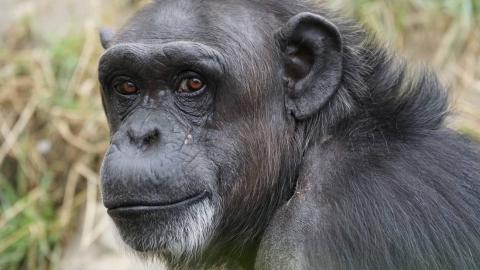Female bonobos gain power over males by forming aggressive coalitions
The frequency of aggressive coalitions among female bonobos is associated with greater power over males, according to a study published in Communications Biology. The analysis is based on observations of six wild bonobo communities in the Democratic Republic of Congo between 1993 and 2021.

Maud Mouginot - bonobas poderosas EN
Maud Mouginot
Evolutionary anthropologist, postdoctoral researcher in Anthropology at Boston University (USA)
In this study, Surbeck and his colleagues present compelling quantitative data demonstrating that female bonobos form coalitions to gain dominance over males. As the authors point out, although species with high female power relative to males have been studied for a long time, our understanding of the factors that shape this dynamic and its relevance for explaining sex dynamics remains limited. The authors tested three hypotheses—the self-organisation hypothesis, the reproductive control hypothesis, and the female coalition hypothesis—based on data collected from six wild bonobo communities over 30 years of observation. Given the difficulties of systematically collecting data on wild bonobos, this collaborative, multi-site approach is particularly valuable. It allows hypotheses to be tested rigorously and provides a more nuanced understanding of both species-wide patterns and variation within the species.
Surprisingly, the results supported the least discussed hypothesis: the female coalition hypothesis. This suggests that, in bonobos, female power arises from coalition aggression against males, allowing them to win a greater share of intersexual conflicts and rise in social rank. These findings add to the growing literature demonstrating that bonobos and chimpanzees—our two closest living relatives—exhibit strikingly different sex power dynamics. These differences, in turn, may influence each species' aggression strategy. Importantly, the study highlights the role of mutual social support among unrelated females in shaping patterns of sex-based dominance. These findings are significant not only for better understanding bonobo society, but also for broadening our comparative framework on female social strategies across all animals, including humans, where increasing attention is being paid to the importance of female social networks and the influence of women in human societies.
Alex Sánchez - bonobas poderosas EN
Álex Sánchez-Amaro
Lecturer in Psychology in the Faculty of Natural Sciences at the University of Stirling (United Kingdom)
The study by Surbeck and colleagues represents a significant contribution to our understanding of power dynamics between the sexes in bonobos, one of the few mammal species in which females can hold a higher social status than males, despite sexual dimorphism favouring the latter. This work seeks to identify the factors underlying this phenomenon.
The conclusions of the article are supported by solid data collected over 30 years in six free-ranging bonobo communities. The methodology employed is rigorous, using appropriate statistical models that control for various random effects and possible temporal autocorrelations.
This study is part of a tradition of research on sexual dominance in bonobos (Tokuyama & Furuichi, 2016) and contributes a relevant novelty: it is the first to systematically rule out the self-organisation hypothesis and the reproductive control hypothesis, in favour of the female coalition hypothesis as the main explanation for female power in bonobos (female coalition hypothesis). The results show that the frequency of aggressive coalitions between females—mostly directed against males—is significantly associated with greater relative female power, measured both by the proportion of intersexual conflicts won and by their position in the social hierarchy.
The study, however, is not without limitations. For example, data on sexual swelling and female coalitions are only available for a small subset of communities and years (15 years in five communities), which may limit the generalisation of the results.
From my perspective as a psychologist focused on the study of bonobos and other primates in captivity, I believe that future research should examine whether the factors that explain female power in bonobos—such as female coalitions—are comparable in natural environments and under controlled conditions.
In practical terms, the study's findings have important implications for the field of psychology. They reinforce the idea that social support can be an effective strategy for counteracting dominance based on physical strength, which may inspire broader reflections on the dynamics of power and cooperation in our species.
Martin Surbeck et al.
- Research article
- Peer reviewed
- Animals



